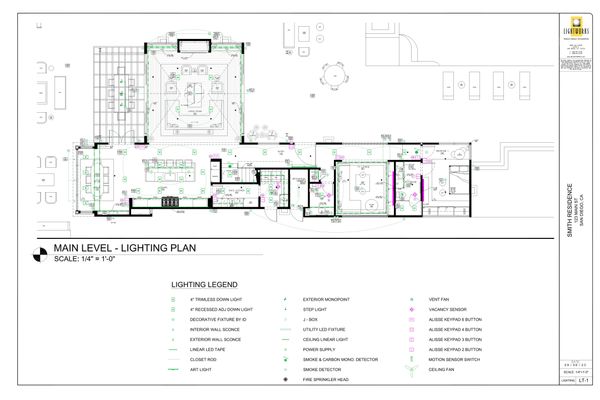
When it comes to interior design, the choices concerning lighting carry considerable influence over the general ambiance of a space. Despite the common interchangeability of the term’s "layout" and "design," understanding the nuances that set them apart is crucial for creating a unified and brilliantly lit environment. This thorough guide endeavors to unravel the distinctions between layout and design within the context of lighting, offering valuable insights to empower you in making informed decisions to effectively illuminate your spaces.
1. Deciphering Layout in Lighting:
a. Spatial Arrangement:
Lighting layout refers to the strategic positioning and distribution of light fixtures within a space. It involves determining the number of fixtures, their placement, and the overall coverage to achieve optimal illumination. Considerations include the room's size, shape, and function.
b. Functional Illumination:
The primary goal of a lighting layout is to ensure that the space is well-lit for its intended purpose. Task lighting, ambient lighting, and accent lighting all play crucial roles in a well-thought-out layout. For example, task lighting in a kitchen should focus on work surfaces, while ambient lighting in a living room sets the overall mood.
2. Unveiling the Art of Lighting Design:
a. Aesthetic Considerations:
Lighting design, on the other hand, goes beyond mere functionality to embrace the artistic aspects of illumination. It involves selecting fixtures that not only provide light but also contribute to the overall visual appeal of the space. This includes considering the style, color, and design of each fixture.
b. Creating Atmosphere:
Lighting design is about crafting an atmosphere that suits the purpose of the space. Whether it's a cozy corner for reading, a vibrant ambiance for socializing, or a focused environment for work, the design choices influence the emotional response elicited by the lighting.
3. Striking a Balance:
a. Integration of Layout and Design:
Achieving the perfect lighting scenario involves striking a delicate balance between layout and design. A well-thought-out layout sets the foundation for functional lighting, while thoughtful design elements enhance the overall aesthetic appeal.
b. Customization and Personalization:
The beauty of balancing layout and design lies in the ability to customize the lighting to suit individual preferences. Smart lighting solutions and dimmers, for example, allow for the adjustment of intensity, color temperature, and even the direction of light, providing a personalized touch to the illumination.
4. Technological Advancements in Lighting:
The intersection of technology and lighting design has given rise to innovative solutions. LED technology, smart lighting controls, and energy-efficient fixtures offer both practicality and aesthetics. Embracing these advancements allows for greater flexibility in achieving the desired lighting layout and design.
5. Professional Guidance:
For those navigating the complexities of lighting layout and design, seeking professional guidance, from a Lighting Designer, can be invaluable. Lighting designers possess the expertise to optimize both the layout and design aspects, ensuring a seamless integration that transforms spaces into visually stunning and functional environments.
In the world of lighting, understanding the distinctions between layout and design is crucial for creating spaces that are not only well-lit but also visually appealing. By combining a thoughtful lighting layout with carefully curated design elements, individuals can master the art of illumination, transforming their homes and spaces into inviting and aesthetically pleasing sanctuaries. Explore the possibilities, strike the right balance, and let your space shine with the perfect blend of layout and design.